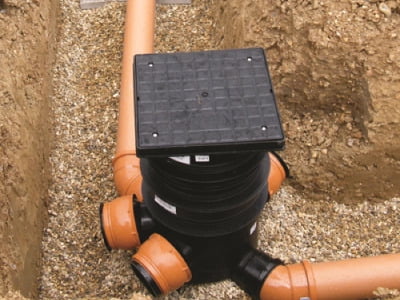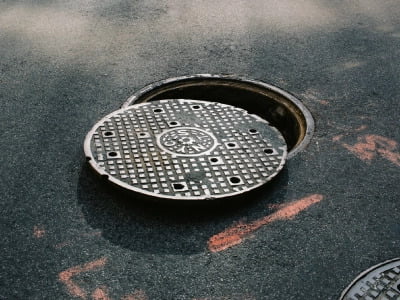In the realm of subterranean drainage systems and utility networks, inspection chambers and manholes are indispensable components that have pivotal roles in enabling efficient maintenance, essential repairs, and protecting the environment. This comprehensive guide is dedicated to exploring these essential elements, elaborating on their functions, highlighting their significance, and elucidating the best practices for their proper upkeep.
Though we may not look to them immediately, these hatches oversee the flow of vital utilities like street lighting, telecommunications, flood prevention, sewage and drainage systems, water supplies, and gas distribution, to name a few. Whether nestled beneath a bustling high street or concealed beneath a quiet residential road, their presence is a testament to meticulous planning and engineering expertise.
The Significance of Inspection Chambers and Manholes
Inspection chambers and manholes are integral components within underground infrastructure. These robust structures are strategically positioned at key points along drainage and utility networks, serving as access points for utility workers and inspectors. They act as gateways into the intricate network of pipes, conduits, and cables that lie beneath our feet.

Functionality of Inspection Chambers
Inspection chambers, often referred to as ‘inspection pits’ or ‘access chambers’, serve several functions within subterranean systems. They provide a means for access and inspection, meaning technicians and engineers can work within the network, allowing them to inspect the condition of pipes, conduits, and connections. This access is invaluable for routine maintenance checks and troubleshooting in emergencies. Once there, they are also able to carry out repairs when issues like blockages or leaks are detected.
In drainage systems, these chambers may include features like flow regulators, which manage the flow of wastewater to prevent overflow and flooding during heavy rainfall. This also serves to prevent pollutants and contaminants from entering the natural environment.
Functionality of Manholes
Manholes, on the other hand, are larger, more substantial structures with a broader scope of utility. They are designed to provide access to deeper underground systems, such as sewer lines and utility tunnels, being larger in size to accommodate personnel and their equipment. Manholes grant access to electrical, telecommunications, and other utility infrastructure. This makes them indispensable in urban environments where multiple utility services converge.
Maintaining inspection chambers and manholes is essential to ensure their ongoing functionality. Regular inspections will identify signs of wear, damage, or blockages that could impede their proper operation. Removing debris and sediment that obstructs drainage or access is crucial for maintaining efficient water flow and utility access. Structural repairs should be carried out to address any damage or deterioration.
It's also advisable to regularly check the condition of access points, making sure that covers and lids are securely in place to prevent accidents and unauthorised access. Additionally, upgrading chambers and manholes in line with technological advancements and updates is of utmost importance.

In environmentally sensitive areas with rich wildlife and fragile ecosystems, the presence of inspection chambers and manholes is even more critical. They are the first line of defence against contamination and groundwater pollution. By promptly detecting and remedying potential leaks or spills, inspection chambers and manholes contribute to safeguarding and preserving the natural surroundings.
Members of the public should refrain from tampering with manhole covers or inspection chamber hatches. Without proper training, interference can lead to damage and even injuries. However, community involvement is encouraged when it comes to reporting any observed damage to manholes or inspection chamber hatches. Given their multiple benefits to local communities, a cracked or broken manhole cover, when detected early, can be swiftly repaired with minimal disruption to public access.
Often the unsung heroes of underground infrastructure, inspection chambers and manholes are essential for the proper functioning of sewer systems, drainage networks, and utilities that can often go overlooked by the layman. Understanding their significance and adhering to best practices can ensure the longevity and efficiency of our underground infrastructure and preserve the balance of our ecosystems. If you find a problem occurring with an inspection chamber or manhole on your property, call Grey-Water Drainage as soon as possible for total drain solutions and our trained team will address the issue swiftly.

